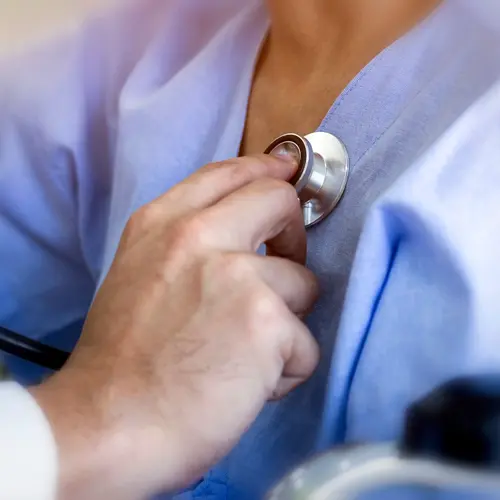Often when you need medicine, you just pop a pill in your mouth, down some water, and go about your day. But at other times your doctor may need to give you drugs or fluids that go right into one of your veins.
If you only need it for a few days, like when you’re healing from surgery, you’ll likely get a regular intravenous tube (IV). It’s thin and about an inch long. It goes into your arm or hand. But if you need care for longer than that, you might get what’s called a central venous catheter. It’s also called a central line.
A CVC is also a thin tube, but it’s much longer than a regular IV. It typically goes into a large vein in your arm or chest.
When Would I Need One?
The key with CVCs is that they can stay in for weeks or even years, depending on the type. That can make long-term treatment a lot easier.
If you get needles or a regular IV over and over, they can damage your veins. Plus, constantly getting stuck with needles can take a toll on you. And, if you get a lot of medicine through an IV, you might feel it burning every time it goes in.
A CVC helps you avoid those problems.
Your doctor may use it to give you medicine for pain, infection, and other conditions, such as cancer or heart issues. They can also be used for taking samples for tests and to give you fluids, nutrients, and blood.
For example, you might get a CVC if you need:
- A lot of blood tests
- Chemotherapy for cancer
- Kidney dialysis
- Long-term antibiotics to fight infection
- Self-treatment at home
There are different types of CVCs. Which one you get depends on several things:
- What you need it for
- How long you’ll have it
- Where in your body it goes
This is something you would talk over in detail with your doctor. Here’s more on three of the types:
PICC Line
A PICC (peripherally inserted central catheter) line goes into your arm and runs all the way to a large vein near your heart. The other end may have one or two tubes, called lumens, that stick out of your arm just above your elbow. That’s where the medicine goes.
When you need a PICC line, first you get some medicine so you won’t feel any pain. Then, your doctor uses a needle to insert the tube. They’ll have ultrasound or fluoroscopy (it’s like a live X-ray) to help guide the tube into place.
Your doctor then takes the needle out and puts a bandage, called a dressing, over the area where the PICC went in. This keeps it clean and dry, which helps you avoid infection.
You’ll need to flush your PICC line and change the dressing often. A nurse will show you how to do this.
Port
Also called an implanted port, this is a thin tube with one or two discs on one end. It goes entirely under your skin, discs and all. You usually get it in your chest, just under your collarbone.
To give you treatment, your doctor places a needle through your skin and into the disc. To keep you from feeling pain, you can get a cream to rub on and numb the area where the needle goes in.
To get a port, you need a short, minor surgery. You’ll be awake for it, but you’ll get drugs to help you relax and prevent pain.
Your doctor makes two small cuts, then slides the tube into a vein until it gets right near your heart. Then, they place the disc end of the port into a pocket between the two cuts. Your doctor closes both cuts with stitches or a special glue called Dermabond.
When you’re done, you’ll have just a small bump where the disc is. Because it’s totally under your skin, a port doesn’t limit day-to-day activities as much as other CVCs.
You can’t play contact sports such as football or hockey, but once you heal from the surgery and get your doctor’s go-ahead, you can swim, bathe, and shower as usual.
It can stay in for years, and when not in use, it doesn’t require as much care as a PICC line or tunneled CVC.
Tunneled CVC
Most times, this one also goes into your chest around your collarbone. One end goes near your heart. On the other end, just like a PICC line, you’ll have one or more lumens where your doctor can insert medicine.
When you need a tunneled CVC, you get medicine to help you relax and to make sure you don’t feel any pain. Your doctor makes two small cuts, then they ease the catheter into your vein and guides it toward your heart. The other end goes in the tunnel between the two cuts, and the lumens hang 6 to 10 inches out of your chest.
There’s a cuff in the part that sits in the tunnel, which helps hold the catheter in place. Your doctor then uses stitches to close the cuts and puts a dressing over both.
You might be a little sore after getting the catheter in, but that will pass within a couple of days. You’ll need to flush it and change the dressing regularly.

